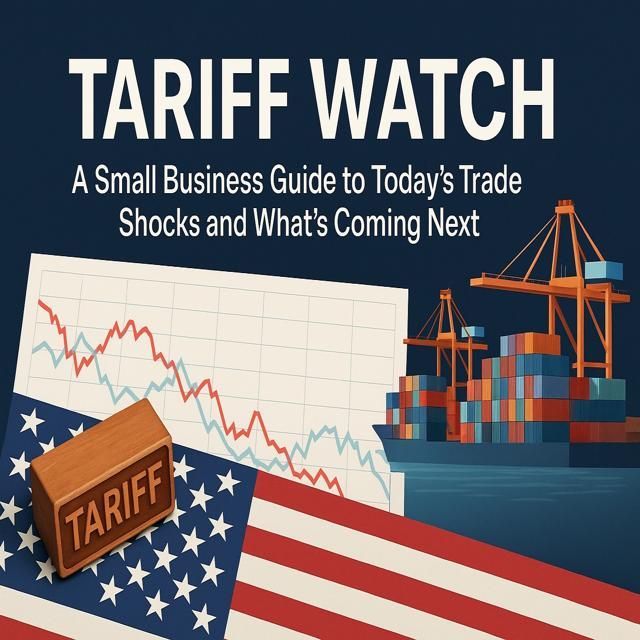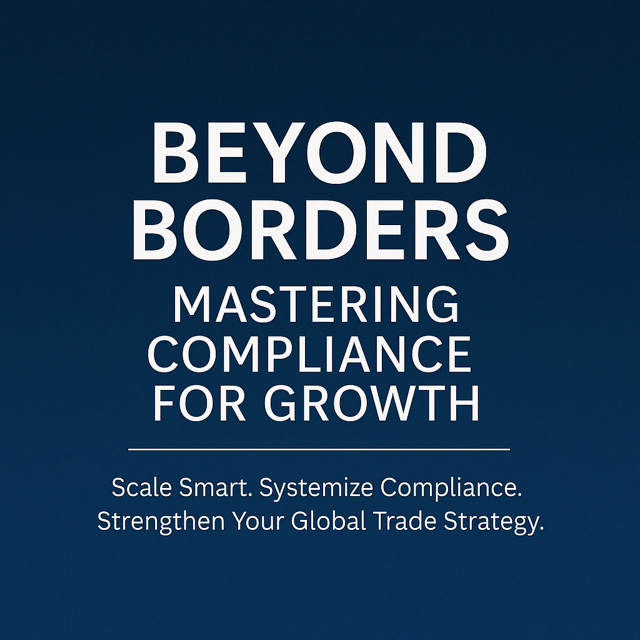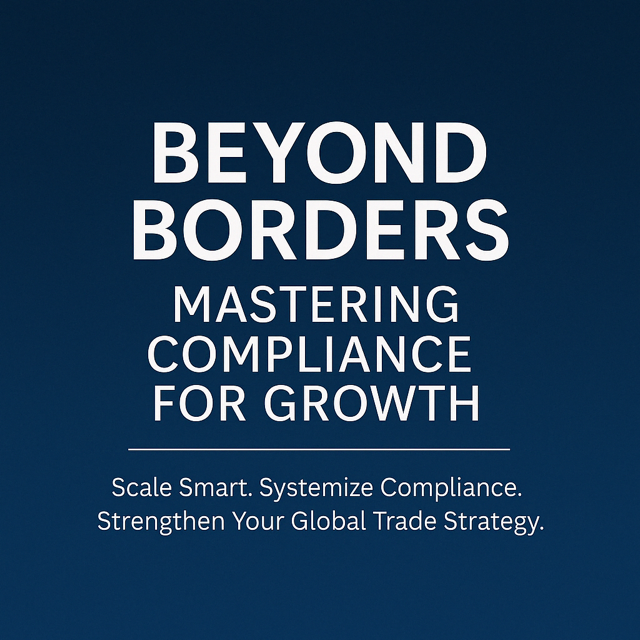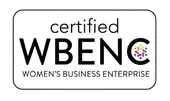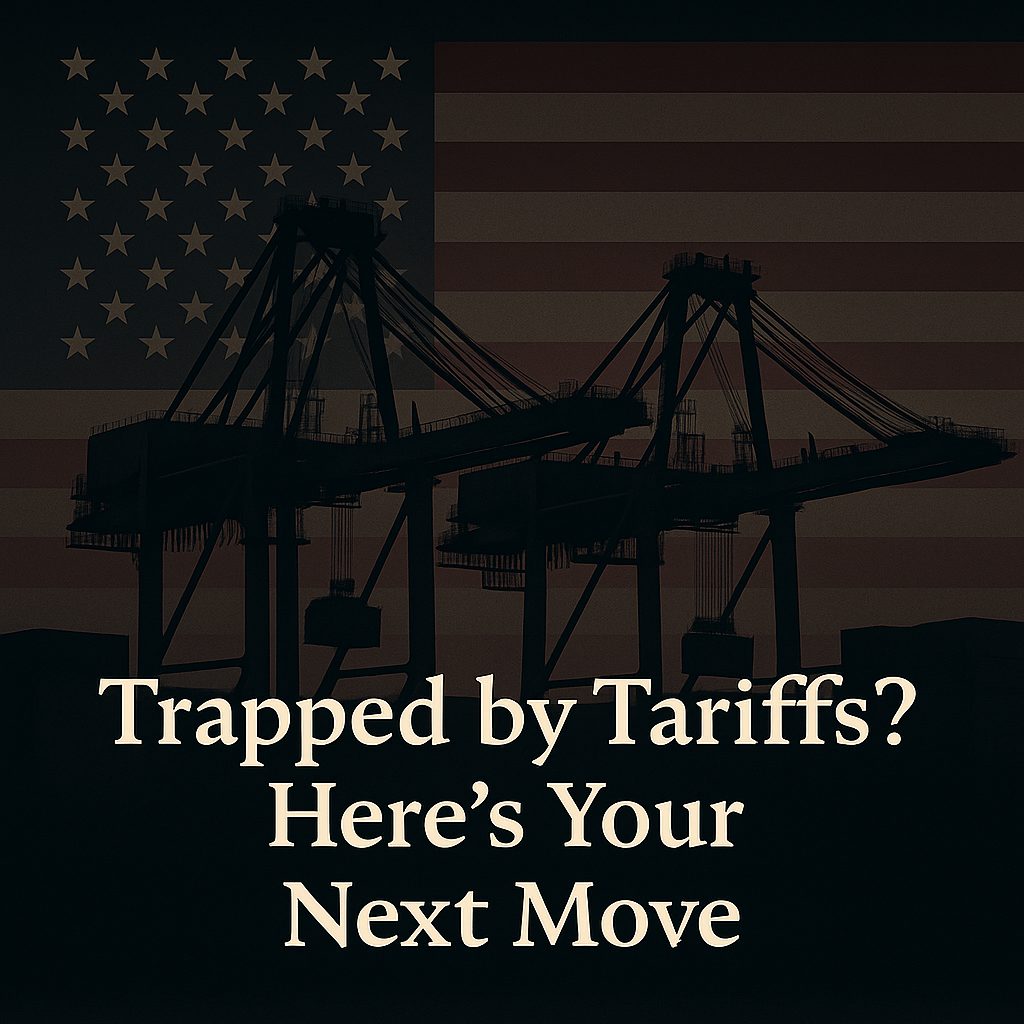
Audio Conversation:
Full Blog Article:
Navigating today’s trade tensions as a small business isn’t easy, but there are real, strategic ways to manage rising costs and prepare for what’s ahead.
U.S. small and midsize businesses (SMBs) are facing growing pressure from ongoing global trade disputes. Escalating tariffs, especially on Chinese-origin goods, have driven up costs, disrupted supply chains, and left many SMBs searching for answers.
Here’s the reality: most smaller businesses don’t have the flexibility to pivot overnight. If you’re sourcing from China, you may be stuck paying 35%-55% tariffs and wondering how to stay competitive in a shifting trade landscape.
The good news? There are practical steps you can take today to weather the storm and strategically plan for tomorrow.
Let’s break it down.
1.
Rethink Your Product Classification: Are You Overpaying?
One of the most overlooked strategies is right at your fingertips: tariff classification.
Many SMBs are unknowingly using outdated or incorrect HTS (Harmonized Tariff Schedule) codes. Even a small change in classification could lead to major duty savings, legally and compliantly.
What to do: Ask your customs broker or a qualified trade consultant to conduct a classification review. If a lower duty rate applies to your product under a different, more accurate code, this review could unlock meaningful savings.
Want to understand the basics of HTS codes? Check out our earlier article: “Cracking the Code: How Are Products Classified for International Trade?”
2.
Rethink Your Pricing Strategy
- Without Losing Customers
Tariffs raise costs, but that doesn’t mean you have to take the full hit or pass it all onto your customers without context.
The key is transparent, value-focused pricing. That means clearly communicating tariff-related adjustments and providing options that make it easier for customers to stick with you.
Ideas to consider:
- Introduce “tariff-adjusted” SKUs with clear labeling.
- Offer early-order discounts or loyalty pricing.
- Add messaging at checkout or on product pages that explains the pricing changes due to external trade policies.
Example message 1 :
“Due to increased tariffs on select imports, pricing has been updated to reflect these costs. We’re committed to transparency and appreciate your continued support.”
Example message 2:
"Some of our prices have changed due to new import tariffs. We're doing our best to keep things fair and appreciate your sticking with us."
3.
Save on Logistics: Optimize Your Shipping Terms
You may not be able to lower the tariff rate, but you can control how much you spend getting your goods here.
Cost-saving ideas:
- Consolidate shipments to reduce customs entries and brokerage fees.
- Revisit your Incoterms, shifting from FOB (Free on Board) to EXW (Ex Works) could give you more visibility and control.
- Explore alternative ports, warehouses, or shipping lanes to minimize total landed costs.
Not sure what Incoterms are? We break it down in our article: “What Do Terms Like FOB, CIF, and EXW Mean?”
4.
Use Bonded Warehousing or FTZs
While you might not avoid the tariff altogether, you can control when you pay.
Bonded Warehouses
- Store imported goods duty-free until they’re officially entered for U.S. consumption.
- If the goods are re-exported, no duties are due.
- Ideal for products with long inventory cycles or uncertain demand.
Foreign Trade Zones (FTZs)
- Let you store, assemble, test, or repackage goods before they officially enter U.S. Commerce.
- Duties are only paid when goods leave the zone for domestic sale, helping with cash flow.
- If your goods aren't from China, you may benefit from inverted tariff relief (i.e, paying duty at the finished product rate, which is sometimes lower than the component rate).
- For Chinese-origin goods, Section 301 rules require privileged Foreign status, which locks in the original duty rate at the time of entry, with no inverted tariff benefit.
5.
Communicate Early and Often
When the market is unstable, relationships become your competitive advantage.
With Suppliers:
- Explore cost-sharing options or renegotiate volume discounts.
- Discuss staggered payment terms to ease cash flow.
- Identify whether there’s any wiggle room on shipping or Incoterm arrangements.
With Customers:
- Be transparent about price increases.
- Offer incentives for early or bulk purchases.
- Highlight U.S.-made or tariff-free products as alternatives when possible.
Don’t underestimate the power of proactive communication; it builds trust and opens the door to creative solutions.
6.
Use the Free and Low-Cost Resources Available to You
There’s no reason to navigate this landscape alone. Plenty of trusted organizations are here to help.
Tap into:
- U.S. Commercial Service: Free trade counseling and market insights.
- Small Business Development Centers (SBDCs): One-on-one support and training for exporters and importers.
- Industry Trade Associations: Regular updates, compliance tools, and strategic briefings.
- Customs Brokers: Hands-on guidance through classification, logistics, and duty deferral programs.
Not sure where to begin? We’re here to help. Contact us for guidance tailored to your business.
7.
Start Planning for Supplier Diversification
Even if you’re locked into your current supplier, you can still start planning for a more flexible supply chain. Countries with lower tariff exposure or trade agreements with the U.S. may offer more favorable terms:
- Vietnam
- India
- Thailand
- Mexico (under USMCA)
- Eligible African countries (under AGOA)
The goal isn’t to rush, it’s to build strategic options.
8.
Should You Consider U.S. Sourcing or Reshoring?
Tariffs have reignited interest in U.S.-based sourcing, and for good reason. For some SMBs, the math works out. Domestic production can reduce tariff exposure, cut shipping costs, and simplify compliance.
Try this approach:
- Maintain current overseas suppliers for volume.
- Start small with U.S. vendors for key SKUs or components.
- Use dual sourcing to increase agility.
Reshoring isn’t a one-size-fits-all, but it could be part of your long-term resilience strategy.
How a Customs and Freight Broker Can Help
U.S. Customs and Freight partners are more than document processors; they are strategic partners for SMBs navigating today’s trade challenges.
Here’s how they can help:
- Review your HTS classifications for possible savings.
- Advise on duty deferral options like bonded warehouses and FTZs.
- Coordinate efficient shipping to reduce freight and brokerage fees.
- Offer compliance reviews to prevent costly penalties.
- Serve as advisors when planning new sourcing or tariff strategies.
Working with a licensed broker can help you move from reactive to proactive when it comes to trade and tariffs.
Summary:
From Tariff Trouble to Trade Strategy
Tariffs may be squeezing margins, but they don’t have to crush your global trade goals.
Key Takeaways:
- Review your tariff classifications for accuracy.
- Adjust your pricing with transparency.
- Control what you can, like shipping and logistics costs.
- Use bonded warehouses and FTZs to delay duties.
- Lean into supplier and customer relationships.
- Tap into free trade resources and expert brokers.
- Start long-term planning for supply chain diversification and U.S. sourcing.
You may feel trapped by tariffs today, but with the right strategy, you’re positioned for progress tomorrow.
Frequently Asked Questions (FAQs):
Q1: Can I still use Section 321 to avoid duties on Chinese goods under $800?
A1:
No. Due to current trade war measures, goods imported from China are excluded from Section 321 de minimis duty exemptions, even if they fall under the $800 threshold.
Q2: Can bonded warehouses eliminate my duty liability?
A2: Not entirely. Bonded warehouses allow you to store goods without paying duties upfront. If the goods are re-exported, you won’t owe any duties, but if they’re sold in the U.S., you’ll need to pay duties when they’re withdrawn.
Q3: Can I still benefit from inverted tariff savings if my product is not from China?
A3: Yes, if your product originates from a country not affected by Section 301 tariffs, you may still be eligible for inverted tariff savings through a Foreign Trade Zone (FTZ). This means if the finished product carries a lower duty rate than its components, you could declare the lower rate when the goods leave the FTZ, potentially reducing your total duty liability.
Q4: Do FTZs still offer inverted tariff savings for goods orginiating from China?
A4: Not for most goods from China. Section 301 requires Chinese-origin products to enter under Privileged Foreign status, which locks in the original higher tariff rate, even if processing would typically qualify for a lower rate.
Q5: Is reclassifying products a legal way to lower my duties?
A5:
Yes, if done correctly. A licensed customs broker can help assess whether a different, more accurate HTS code applies to your goods. Reclassification must always reflect the true nature of the product to remain compliant.
Q6: Should I switch suppliers right now to lower tariffs?
A6:
Not necessarily. While it’s smart to explore supplier alternatives, rushing into a switch without a clear strategy can introduce quality issues, missed deadlines, or even higher costs. Start planning, but move strategically.
Q7: Where can I get support to build a stronger trade strategy?
A7: Start with organizations like the U.S. Commercial Service, your local SBDC, or a trusted customs broker like Magnetic Precision. These partners can help you assess options, plan for diversification, and stay compliant.
If you're curious to see how we can help, please visit our website http://magneticprecision.com/. For inquiries and questions, contact us at inquiries@magneticprecision.com
References:
- U.S. International Trade Commission – HTS Search: Link
- Incoterms Guide – International Chamber of Commerce: Link
- U.S. Customs and Border Protection – Bonded Warehouse: Link
- Section 301 Tariffs: Link
- U.S. Commercial Service: Link
- America’s SBDCs: Link
- Office of the U.S. Trade Representative – AGOA Info:
Link
🎧🎙️Want to hear more?
Stay informed and inspired through two powerful channels:
- Borders & Bourbon - A Global Trade Podcast – Pour yourself a glass and join us for real talk on international trade. This show delivers solution-driven insights tailored for small businesses navigating the complexities of global markets. Available on all major streaming platforms.
- Global Trade Navigator - Prefer to read or listen to quick, practical tips? Explore more blog series articles like these or tune into the companion podcast on Spotify, where we break down each article to help you chart a smarter course through import/export compliance.
No matter your style, sip and listen, or scroll and learn, we’ve got your global trade journey covered.
Stay tuned for more insights as we continue our journey to mastering global trade compliance!

